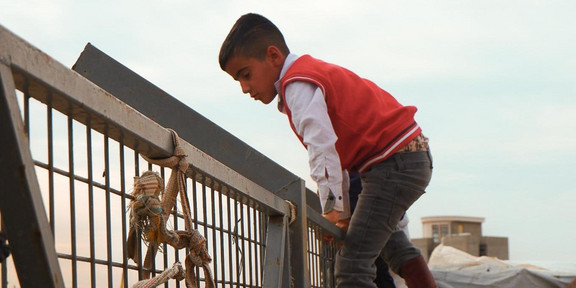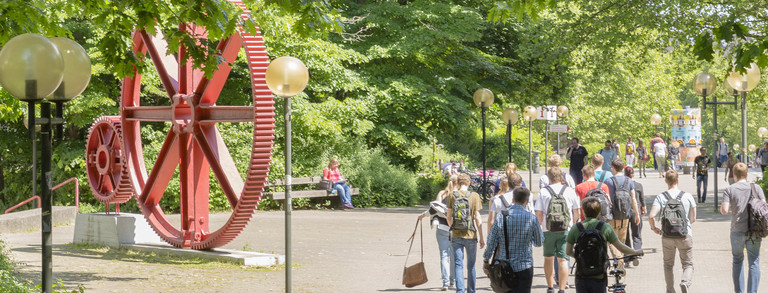Photo Exhibition on the Situation of Yazidi Displaced Persons in Northern Iraq
- Exhibitions

A large number of Yazidis who were already displaced from their homes in 2014 are still forced to live in so-called IDP camps in northern Iraq. These camps were not intended to be permanent places, but have become so over the years.
The Situation of the Yazidi Displaced Persons in Northern Iraq
Exhibition from 15.5. to 23.6.
On May 15, 2023 at 3 p.m., the exhibition on the situation of the Yazidi displaced persons in Northern Iraq will be opened in the foyer of the University Library. The photo exhibition features images from IDP (internally displaced persons) camps in the Duhok district of Kurdistan Iraq. The pictures were created by a student project of the Faculty of Spatial Planning in the course of an excursion to northern Iraq.
This student project takes place in cooperation with the University of Duhok, College of Spatial Planning. The subject of the cooperation is the challenges faced by IDP camps in Duhok district.
Iraq has been severely affected by violence and conflict in recent decades. Today, there are approximately 1.2 million internally displaced persons (IDPs) in Iraq who are still unable to return to their homes (Internally Displaced Monitoring Centre 2022). Many of them were displaced during the 2014 invasion of the Sinjar region, formerly the largest contiguous settlement area of the Yazidi religious minority, by the so-called Islamic State in Iraq and Syria (ISIS), and many residents were brutally executed, sexually abused, and enslaved (Kikoler 2015). Many of those forced to leave the Sinjar region were forced to settle in IDP camps in the Kurdistan Region of Iraq.
Although the camps were established as temporary refuges, many IDPs continue to live there with no certainty of eventual return. As a result, the camps have transformed from temporary refuges into permanent communities. Residents face many challenges, such as lack of economic opportunities, lack of social integration, lack of political participation, and spatial segregation from the city of Duhok and neighboring towns.
The question is how to deal with the camps from an urban planning and regional planning perspective and how to integrate them into the surrounding urban contexts. The exhibition serves to give visitors a deeper insight into the current situation on site.
Program on 15.05.23
- 15:00: Welcome by the project members
- 15:05: Dr. Kreische (Library Director of Dortmund University Library)
- 15:10: Prof. Gruehn (Dean Faculty of Spatial Planning)
- 15:15: Dr. Samir (Vice Dean College of Spatial Planning, University of
- Duhok)
- 15:20: Dr. Lückenkötter & Dr. rer. pol. Sinemillioglu
- 15:30: Open end








